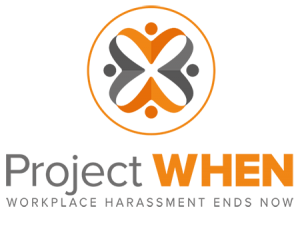Solving the Open-Office Paradox
Several recent articles such as “Google got it wrong. The open-office trend is destroying the workplace.” and “Open-plan offices can be bad for your health” have suggested open-office environments are distracting, stressful, and even unsanitary.

The claims conjure mental images of shared tables filled with stacks of paper and co-workers climbing, shouting, and coughing all over each other.
Certainly this type of hectic environment exists in some corporations, though the vast majority of dysfunctional open plans are much more subdued than the picture painted by most critics. Even in that instance, it is wise not to rush to a quick judgment of the office design and layout itself. Instead, we’d argue it would be prudent to take a step back and look at how the organization implemented this new environment. It is perhaps along those lines where one can begin to question the oft-echoed indictment of the open-office environment being a flawed design solution.
Many business leaders seek a more collaborative workspace because internal communication is lacking or because they feel their current environment doesn’t generate enough innovation and creative results. Under those circumstances, an open office environment makes sense. If a corporation has individuals whose tasks primarily revolve around intense focus or numerous phone calls, perhaps introducing them to a shared space environment without the appropriate preparation might be a risk. Corporations solely interested in the cost savings benefits of an open-office should be wary that a significant initial real estate savings could turn into a highly-resisted and ultimately costly workplace that negatively affects morale and productivity.
To minimize complaints concerning noise, distraction, and stress, and to ensure the overall health of the workplace, policies and protocols concerning all of the above should be communicated and implemented well before the physical changeover takes place. For instance, if an employee feels well enough to work, but is concerned he or she is sick enough to spread an illness, what is the company’s policy on letting them work remotely that day? With so many outlets decrying open-offices as unsuccessful ventures and citing the above complaints as evidence, we at Stegmeier Consulting are curious as to whether the organizations in question did the crucial legwork to address these issues prior to their environment’s overhaul. One would suspect this was not the case.
In regard to the physical space itself, it is important to note that simply shifting to an open-office does not guarantee collaboration and innovation. It is recommended that office layouts include a balance between collaborative areas and spaces where focused work can easily take place. In fact, many companies implement open-office environments in tandem with increasing flexible work options. When reconsidering space allocation, many companies determine that it no longer makes financial sense to provide every employee a dedicated work station. As a result, companies are providing workers with mobile capabilities so they are not tied down to one seat all day.
It is during these types of large-scale change strategies where the concerns raised about open-offices may be alleviated. When a workforce is capable of working from home, the road, or various locations throughout a building, the number of people confined to the new open workspace could be significantly reduced. This could also equate to lower distractions and reduced stress levels. Additional benefits include the ability for sick employees to complete their daily tasks from home if needed, and of course, a smaller real estate footprint for the organization. When approached the correct way, a more open work environment can still be a win for everyone involved.

We encourage clients considering a workplace change initiative to begin strategizing early on as to how this change will affect employees and what can be done to ensure new work practices are fully adopted. Partnering with SCG means your organization will get the assistance it needs to not only kickoff a workplace change initiative, but to see it through to completion as well. For instance, we can develop a communications plan for your entire company that conveys how and when various steps of the process will be implemented. We will also work with your project team on the creation of policies that will help your employees and managers understand the expectations of the new strategy. And of course, we offer training (both virtual and on-site) to ensure a smooth transition from the “old” style of work to the freshly rolled out new approach.
Another consideration for organizations embracing flexible work is to conduct a suitability assessment. Conducting an assessment of employees to see who is most suitable for these new mobile and flexible work styles takes the favoritism out of the decision making. Teleworkers, for example, typically should be responsible self-starters with the technology and space in their home environment necessary to be productive. Stegmeier Consulting Group specializes in the conducting suitability assessments in order to make sure the most appropriate individuals match the new work styles created by your new strategy. This is a crucial early step necessary to avoid your employees feeling out of place and ultimately disenchanted with the overall change.
The question once again becomes: for those who are struggling in an open-office, what has your company done to prepare you for acclimation to a drastic new style of working? Changing to a redesigned workplace can certainly be a challenge, especially transitioning to an open-office design. But the change can be successful, and your employees can successfully adjust. Remember, the bulk of the complaints one reads or hears about are usually a result of poor planning and an inability to prepare employees. In other words, these companies have not fully considered the role of change management – a practice we work on perfecting with our clients every day.
Stegmeier Consulting Group can assist with a wide range of challenges involved in implementing a workplace change initiative. Contact us to find out how our services can help your organization.
https://stegmeierconsulting.com/contact/
Changing the way organizations manage workplace change

Nick Virzi of Stegmeier Consulting Group is a seven year veteran of working in open-office environments. Nick currently works in an operations role with SCG, handling several business functions as well as researching and writing about the field of workplace change.



